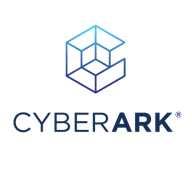

CyberArk Privileged Access Manager and Microsoft Entra ID compete in identity and access management solutions. Microsoft Entra ID maintains an edge due to its extensive features, offering potentially higher overall value despite CyberArk's strengths in pricing and support.
Features: CyberArk Privileged Access Manager provides robust security protocols, detailed audit capabilities, and smooth infrastructure integration. Microsoft Entra ID excels with comprehensive identity management tools, single sign-on features, and powerful conditional access policies, surpassing CyberArk's identity management capabilities.
Room for Improvement: CyberArk can enhance user interface intuitiveness, expand its customization options, and improve deployment speed. Microsoft Entra ID could benefit from reducing complexity in configuration, providing better integration documentation, and enhanced API flexibility.
Ease of Deployment and Customer Service: CyberArk Privileged Access Manager is recognized for efficient deployment and responsive customer support, though it involves a learning curve. Microsoft Entra ID offers straightforward Azure service integration and effective support, facilitating a smooth deployment experience.
Pricing and ROI: CyberArk Privileged Access Manager is valued for competitive pricing and strong security ROI. Microsoft Entra ID may entail higher initial costs but offers significant long-term benefits through extensive features and integrations, ensuring a robust ROI.
The return on investment lies in improved security infrastructure, addressing over-privileged access, and reducing the risk of credential compromise, which is a major source of data breaches.
The end users have the authority to reconcile the password or verify it before using session isolation, which is one of the unique features that can be enabled through Privileged Session Manager, preventing any attacks from happening within the organization when connected with sessions through CyberArk Privileged Access Manager.
CyberArk Privileged Access Manager has helped customers save on costs primarily by reducing the number of engineering and information security personnel.
We leverage existing licensing, like Windows Server or SQL, and hybrid benefits, and our sales and marketing teams benefit from co-selling and partnership advantages.
We get a return from not needing to pay other vendors to do what we already had from Microsoft, which was better than the competition.
By eliminating the need for multiple VPN channels and enabling direct work from Azure servers, we have achieved approximately 30% efficiency savings.
CyberArk has been exceptional in coming back to us with immediate responses.
It could be forever until you talk to someone who knows what they are doing.
Based on the issue resolution and support quality, I rate the support 10 out of 10.
The actual support when you get to that level is a ten out of ten.
There are immediate answers to any issues that arise with great knowledge and a deep understanding of the product and business needs.
They usually try to deflect, buy time, and often do not address the problem immediately.
The CPM can reportedly handle up to 50,000 accounts independently without issue.
I would rate it a ten out of ten for scalability.
They had 40,000 passwords in this one safe, and it was saving the last ten iterations of each password object. That means they had 400,000 password objects in this safe. They exceeded the limit.
We experienced no scalability issues with Microsoft Entra ID.
Its scalability is impressive, aided by Microsoft's efforts to expand its data centers.
When dealing with tens of thousands of objects, it requires proper management and best practices to retrieve only necessary data.
Proper fine-tuning and expertise ensure the product performs well.
Overall, the stability of the solution is high.
It has a large customer base and positive feedback within my network.
It's a critical solution that we can't do without.
The stability of the solution is very high at 99.999%.
We rarely had significant problems or crashes.
They want everything to be on the cloud, but even in the SaaS version of CyberArk Privileged Access Manager, they need to deploy some servers on-premises.
We cannot generate a plug-in for web-based applications.
If they want clients to move to the cloud, they need to support them in real-time.
A recent incident we dealt with took four months to resolve with a seven-day deadline, which was quite frustrating.
Synchronization issues occasionally occur, making it challenging to analyze logs and pinpoint the exact problem.
There is a need for better transformation support from on-premises Active Directory policies to the cloud, as Entra ID doesn't cover this sufficiently yet.
CyberArk is expensive compared to other products I know.
CyberArk is comparatively expensive compared to other PAM solutions, such as Delinea, especially during renewal.
CyberArk's SaaS solution is particularly expensive.
We are getting our money's worth.
Microsoft sets pricing based on customer demand, adjusting to find the optimal balance between sales volume and profit per unit, similar to how Costco manages product prices.
Most features of Entra ID are part of Microsoft's ecosystem and included in Microsoft 365 bundles, which means there are no additional costs associated with pricing and licensing.
CyberArk Privileged Access Manager helps ensure data privacy because we now know who is using which credentials and at what time.
It keeps a record of activities, allowing me to easily fetch screen recordings to detect any misuse and see who did what and what happened.
It can integrate with Splunk, SNMP, and other solutions and technologies.
We can secure the applications that we are building and make sure that if the application were to be compromised, there is no full access to a customer's environment causing issues and other security concerns.
It's integrated with Microsoft technologies like Authenticator, SSO, and MFA, streamlining operations and creating a seamless environment.
The granular control, such as preventing logins from specific locations, enhances security significantly.


| Company Size | Count |
|---|---|
| Small Business | 59 |
| Midsize Enterprise | 41 |
| Large Enterprise | 171 |
| Company Size | Count |
|---|---|
| Small Business | 80 |
| Midsize Enterprise | 36 |
| Large Enterprise | 132 |
CyberArk Privileged Access Manager is a next-generation solution that allows users to secure both their applications and their confidential corporate information. It is extremely flexible and can be implemented across a variety of environments. This program runs with equal efficiency in a fully cloud-based, hybrid, or on-premises environment. Users can now protect their critical infrastructure and access it in any way that best meets their needs.
CyberArk Privileged Access Manager possesses a simplified and unified user interface. Users are able to manage the solution from one place. The UI allows users to view and manage all of the information and controls that administrators need to be able to easily access. Very often, management UIs do not have all of the controls and information streamlined in a single location. This platform provides a level of visibility that ensures users will be able to view all of their system’s most critical information at any time that they wish.
Benefits of CyberArk Privileged Access Manager
Some of CyberArk Privileged Access Manager’s benefits include:
Reviews from Real Users
CyberArk Privileged Access Manager’s software stands out among its competitors for one very fundamental reason. CyberArk Privileged Access Manager is an all-in-one solution. Users are given the ability to accomplish with a single platform what might usually only be accomplished with multiple solutions.
PeerSpot users note the truly all-in-one nature of this solution. Mateusz K., IT Manager at a financial services firm, wrote, "It improves security in our company. We have more than 10,000 accounts that we manage in CyberArk. We use these accounts for SQLs, Windows Server, and Unix. Therefore, keeping these passwords up-to-date in another solution or software would be impossible. Now, we have some sort of a platform to manage passwords, distribute the inflow, and manage IT teams as well as making regular changes to it according to the internal security policies in our bank."
Hichem T.-B., CDO & Co-Founder at ELYTIK, noted that “This is a complete solution that can detect cyber attacks well. I have found the proxy features most valuable for fast password web access.”
Microsoft Entra ID is an advanced identity and access management service offering seamless single sign-on, multifactor authentication, and centralized user access across applications, enhancing security and efficiency for organizations transitioning to cloud-based environments.
Recognized for its centralized management, Microsoft Entra ID significantly boosts organizational security by integrating features such as conditional access and identity protection. It supports a wide array of applications, facilitating a secure transition from on-premises to scalable cloud environments. By adopting robust security measures and flexible identity management, organizations can streamline operations and ensure consistent user experiences. However, challenges like confusing licensing costs, outdated documentation, and limited integration with non-Microsoft applications persist. Enhancements in technical support, interface design, and more granular permissions are needed to address these issues effectively.
What are the key features of Microsoft Entra ID?In healthcare, Microsoft Entra ID facilitates secure patient record access and compliance with industry regulations. Financial institutions rely on it for robust security measures in safeguarding client data. In the education sector, it streamlines access to online resources for students and faculty. Global enterprises benefit from its ability to manage complex identity frameworks across multiple regions, ensuring reliable security amidst increasing cyber threats.
We monitor all Access Management reviews to prevent fraudulent reviews and keep review quality high. We do not post reviews by company employees or direct competitors. We validate each review for authenticity via cross-reference with LinkedIn, and personal follow-up with the reviewer when necessary.